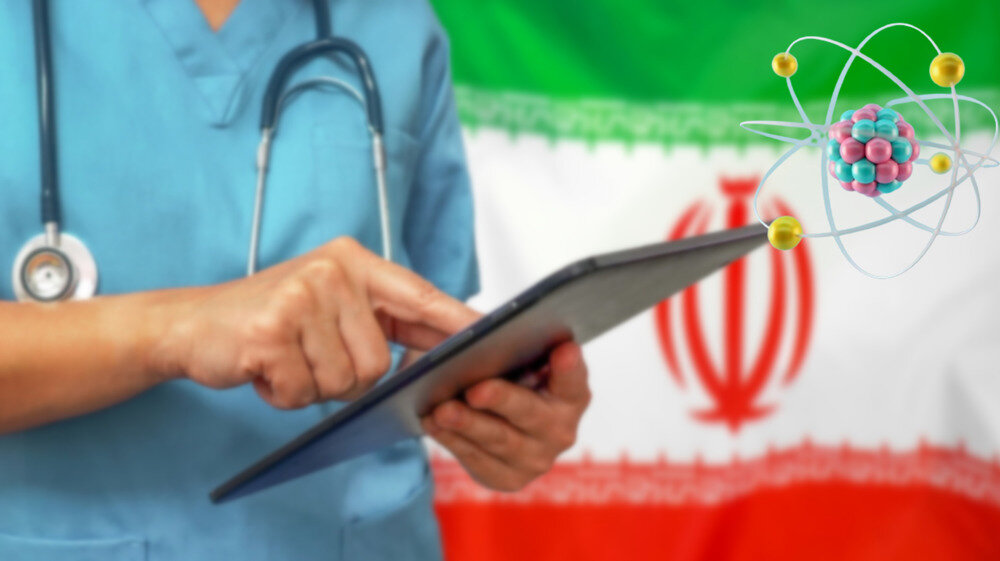Nuclear medicine is a sophisticated field of medicine that utilizes the peaceful use of nuclear energy in the diagnosis and treatment of diseases such as cancer and metabolic disorders.
Radioactive tracers are used to diagnose, stage, treat and monitor illness. This specialization also plays an important role in basic sciences such as biology, drug discovery and clinical medicine.
Until 1990, Iran, which had no specialized infrastructure or nuclear medicine personnel, prides itself on having over 200 active centres that create 90% of the country’s needs.
The country achieved its first rank in the region in the provision of nuclear medicine services. This surprising advancement amidst the most severe sanctions has placed Iran between radioactive drug exporters and local leaders on-site.
Iran is recognized as a key producer of radiopharmaceuticals, the flagship of nuclear medicine. Some reports position the country among the top 3-5 global producers of radioisotopes.
Relying on local capabilities and domestic researchers, we produce a wide range of diagnostic and therapeutic radiopharmaceuticals, ranging from widely used technetium 99m (TC-99M) to iodine-131 and FDG.
FDG or fluorodeoxyglucose is a radioactive drug used in PET (positron emission tomography) scans. This will be produced specifically at the Nuclear Medicine Centre, Shariati Hospital, Tehran.
According to the hospital’s website, the dedicated radiopharmaceutical production department established at the centre has successfully produced FDG using cyclotrons. This will allow Iran to meet the needs of several nuclear medicine centres with pet machines.
Iranian researchers have also developed the ability to produce molybdenum-99 radioactive isotopes used to generate TC-99m from the fission of uranium-235.
Each treatment session with some of these drugs costs thousands of dollars on the global market, but Iran offers just a small portion of this amount.
Many radiopharmaceuticals, especially those used in PET scans, have very short half-life. This means it will be significantly attenuated and reduce effectiveness in a short period of time.
As a result, the “last miles” of radiopharmaceutical delivery, including transport, is important to maintain the efficacy and safety of the drug.
Speaking to IRIB TV3 on Monday night, the head of the Atomic Energy Organization of Iran’s Mohammad Eslami explained that importing radioactive drugs is not possible until recently.
This is because Western countries refused to provide radiopharmaceuticals to Iran for sanctions, while regional airlines such as Qatar Airways did not accept such shipments, he said.
Eslami has been exposed to the Tehran Research Reactor (TRR), a 5 MW pool-type reactor since 1967.
The reactor built by the US – used extremely high concentrations of fissile uranium-235 provided by the Americans at up to 90%. However, Washington stopped supplies after the facility was reconfigured to be fueled with 20% uranium fuel, he added.
“We produced it ourselves. Otherwise we wouldn’t have been able to carry out industrial research or produce radioactive drugs,” Eslami said.
“One million people use our radiopharmaceuticals each year. Why should we put our health and livelihoods at risk and succumb to arbitrary political pressure?” he added.
Iran produces uranium enriched at 20% and 60%. There are several facilities, including the Natantz Fuel Concentration Plant (FEP), the Pilot Fuel Concentration Plant (PFEP), and the Fordow Concentration Plant.
The enrichment programme is a central point of competition in negotiations between Iran and other countries, with the US and its allies trying to limit Iran’s enrichment capabilities.
President Masoud Pezeshkian was exposed to achievements in many fields, from nuclear technology to other scientific and industrial fields during his visit to the Medical Device Exhibition held in Tehran on Tuesday.
“The enemy’s efforts to prevent this process are nothing more than fantasy,” he said.
Official figures show that the number of nuclear medicine centres in Iran jumped from one in 1989 to about 250 in 2024. These centres operate in all 30 states of the country, and their numbers are increasing.
The nuclear medicine industry is also a leading employment generator, employing 4,500 professionals directly, and is projected to grow by 12% by 2027.
The Islamic Republic is currently self-sufficient in nuclear medicine, but also exports radioactive medicines to 15 countries around the world, including Egypt, India, Pakistan, Iraq, Lebanon, Syria and several European countries.
These notable results were not possible without the development of nuclear technology.
Enrichment, production of critical isotopes, and training in human resources all rely on peaceful nuclear activities. If this infrastructure becomes disrupted, millions of Iranians will be deprived of important health services.
Today, the nuclear medicine sector is not only a strategic industry to meet the health needs of society, but also a key economic engine, generating income, creating jobs and reducing the country’s foreign exchange dependence.
These achievements came while countries reflecting Iran’s scientific and technical talent in this sensitive field were under the toughest international sanctions.
MNA/Press TV

